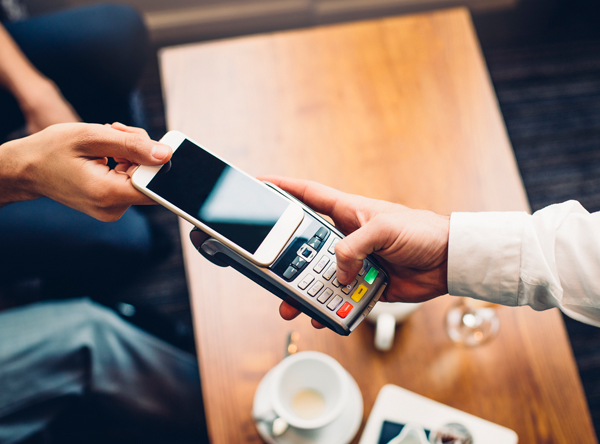In today’s competitive marketplace, retailers need every advantage to attract customers and increase sales. One way many retailers are gaining a competitive edge is by adopting mobile commerce.
M-commerce or mobile commerce is exactly what it sounds like: the buying and selling of goods and services through wireless handheld devices.
Not all mobile payment platforms are alike, although it might appear to be so. Three types of mobile payment technologies exist: mobile wallets, mobile commerce and mobile payments. Each technology requires a different level of investment. Apple Pay, Samsung Pay and Android Pay are examples of mobile wallets that can be installed on a hand-held or wearable device. PayPal is considered a digital wallet, but when used in with mobile payment services and mobile devices, it serves as a mobile wallet.
Several options are available to both merchants and consumers. In addition to those mentioned above, there’s Square, Google Wallet, Venmo and MasterCard’s Masterpass. Google Wallet, Apple and Square support the use of simple NFC (near-field communications) chips, the same as those found in most modern credit cards. This means most retailers can accept Apple Pay on existing NFC terminals, instead of buying new equipment and altering checkout processes.
Credit card companies have completed conversion to EMV chip technology. Debit card conversion should be nearly complete by the end of this year. Merchant terminal upgrades to accept chip cards include additional NFC capability, which may solve the issue where consumers have wallet capability on their smartphones but limited places to use it.
For small retailers that don’t have sophisticated checkouts, Square is a great alternative. Square offers a simple reader that can be plugged into an iOS or Android device. It also offers point-of-sale apps.
If Millennials are part of your target demographic, mobile pay is a must. According to mobile pay provider Payfirma, more than half of Millennials prefer their mobile phone over cash to pay for small-ticket items.
Millennials are just one of several mobile commerce trends. Other trends include digital wallets, monetization of apps, card readers, geo-targeting, geofencing and beacons. Geo-targeting enables merchants to deliver targeted messages to mobile phones within a certain geographical radius. With geofencing, merchants set up a virtual fence around their location so that when customers are nearby they receive a push notification. And beacons can serve up coupons and other offers once the customer is physically in a store.
Another plus of mobile payments is that they enable retailers to collect payment from anywhere in the world. Even if your employees are not at their business location, they can still process payments using your company’s mobile app.
Those concerned about security should know that mobile payment platforms have built-in layers of extra security. This is important to communicate with customers hesitant to use mobile pay. In addition, both parties in the transaction are immediately assured that the funds are available to cover the transaction.
In addition to the initial expense of hardware and setup, retailers will incur transaction fees when they use mobile pay. These fees are comparable to credit card fees, which usually average about 2 percent per transaction.
Retailers must keep consumer preferences in mind, whether it’s regarding days/hours of operation, product selection or method of payment.




